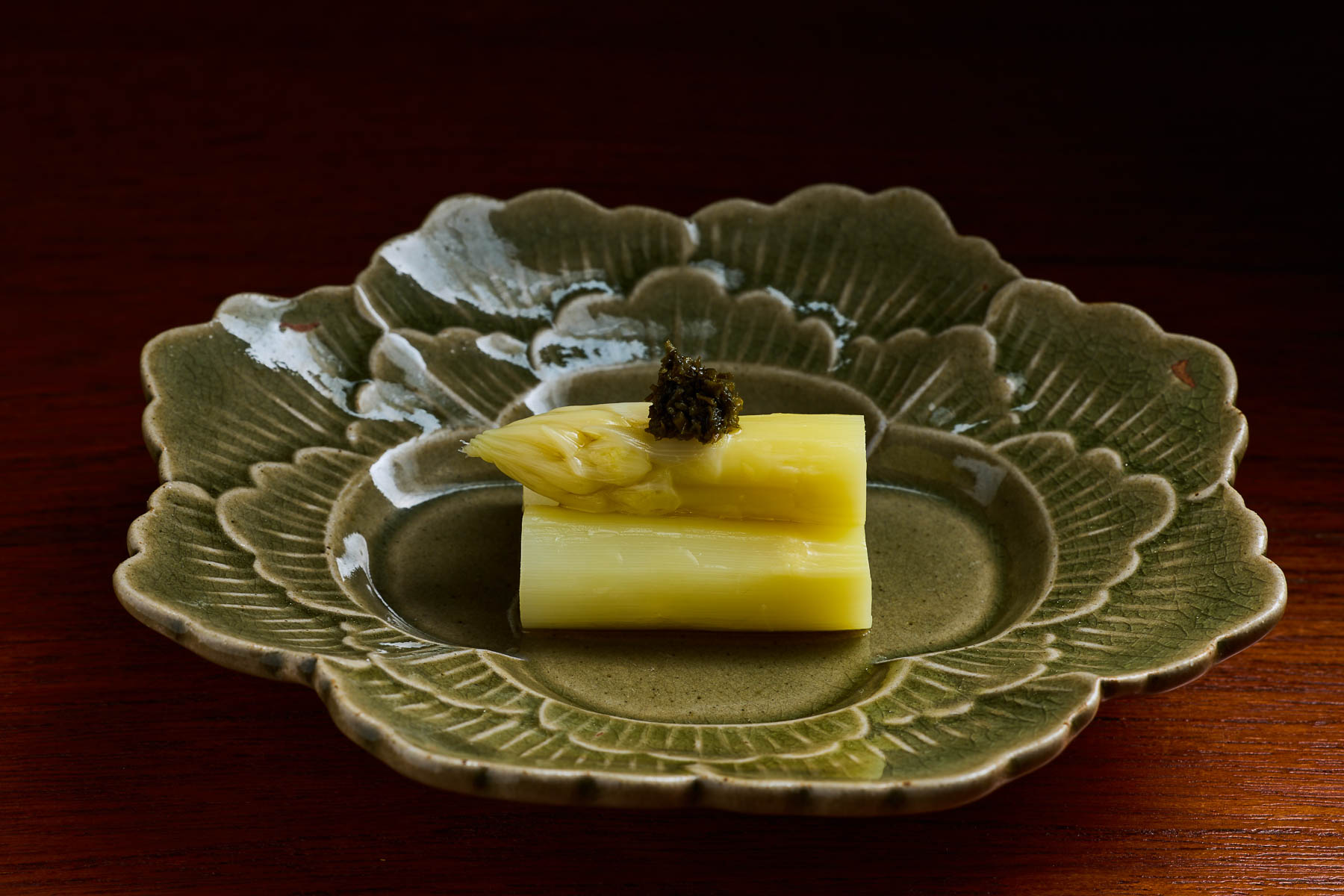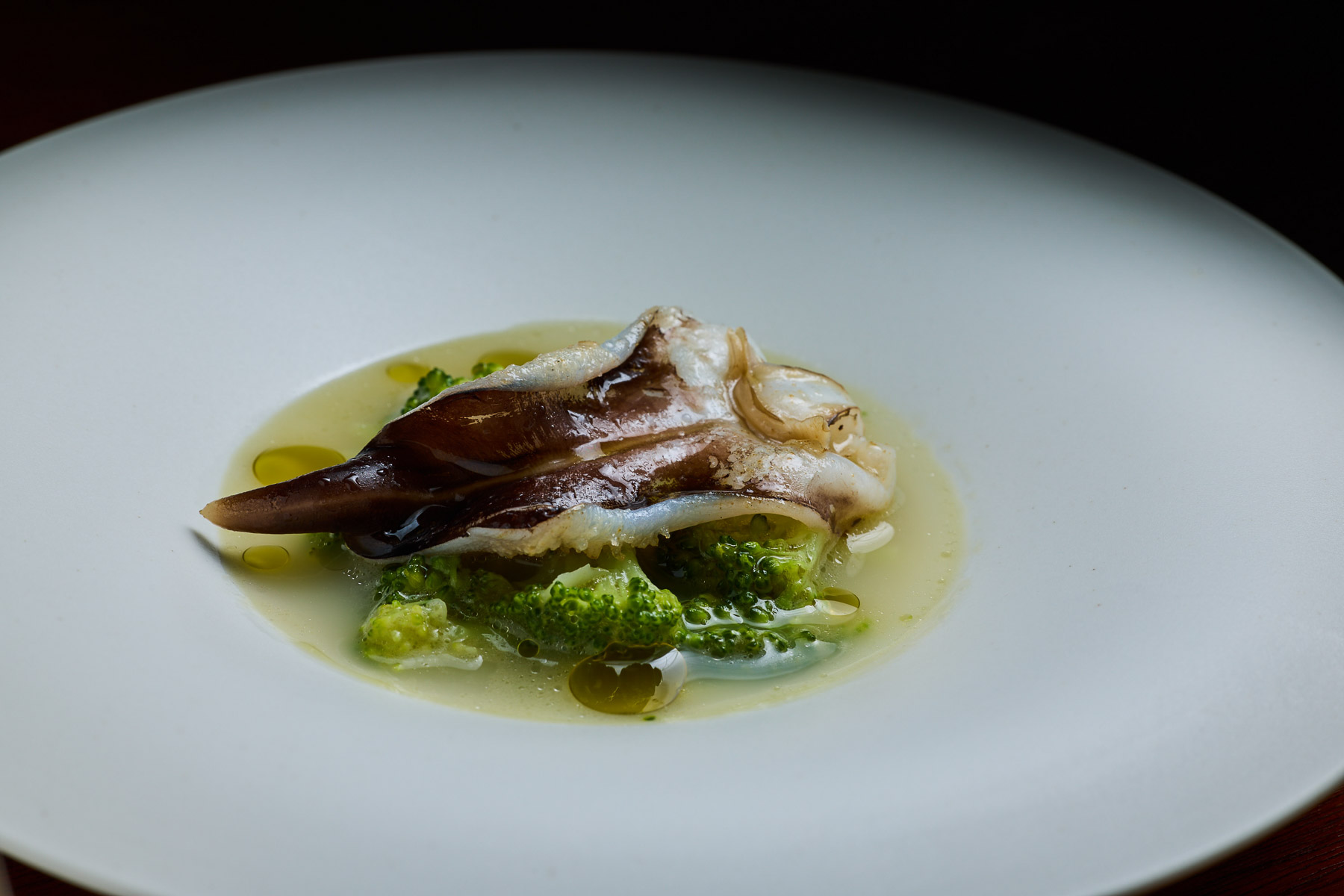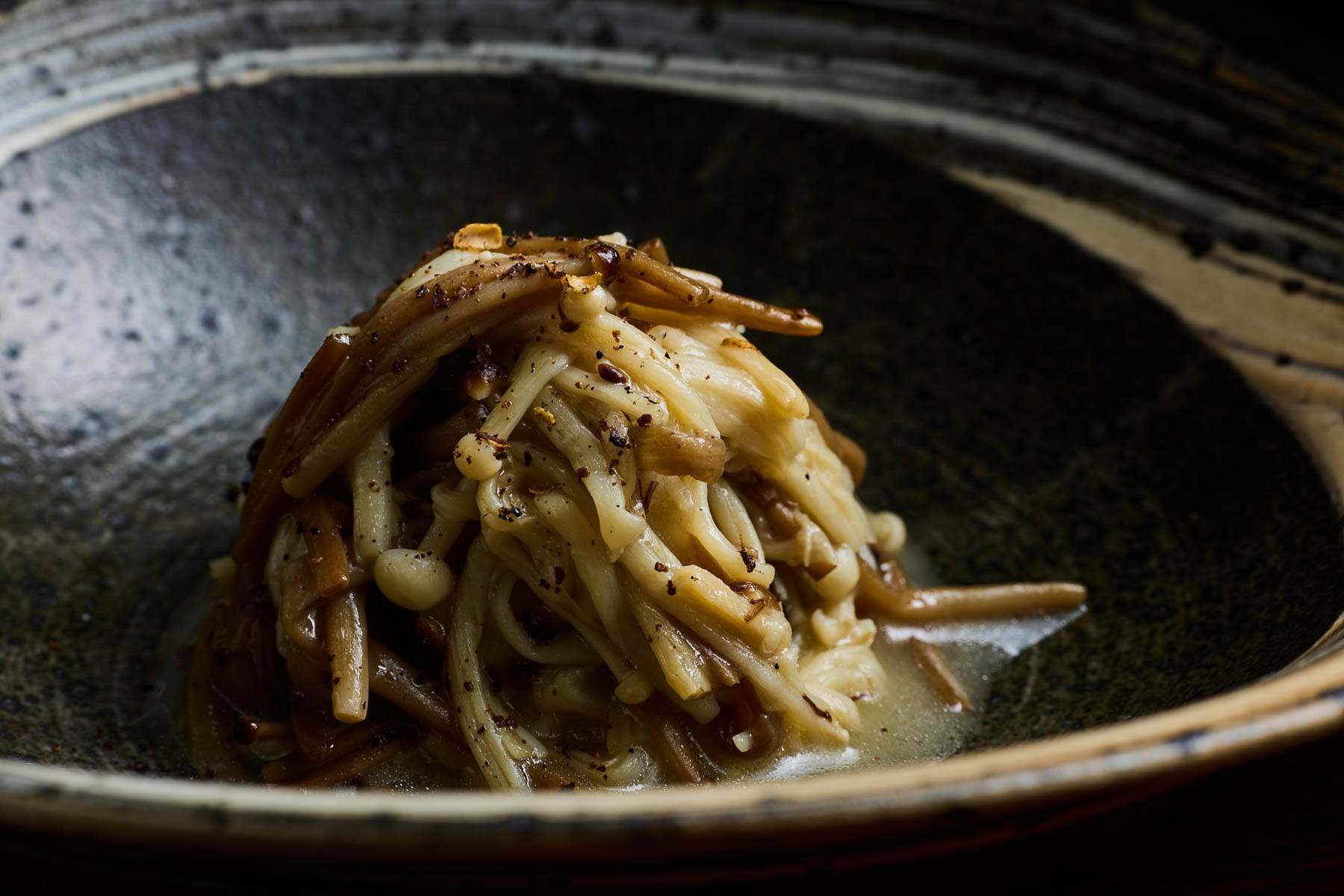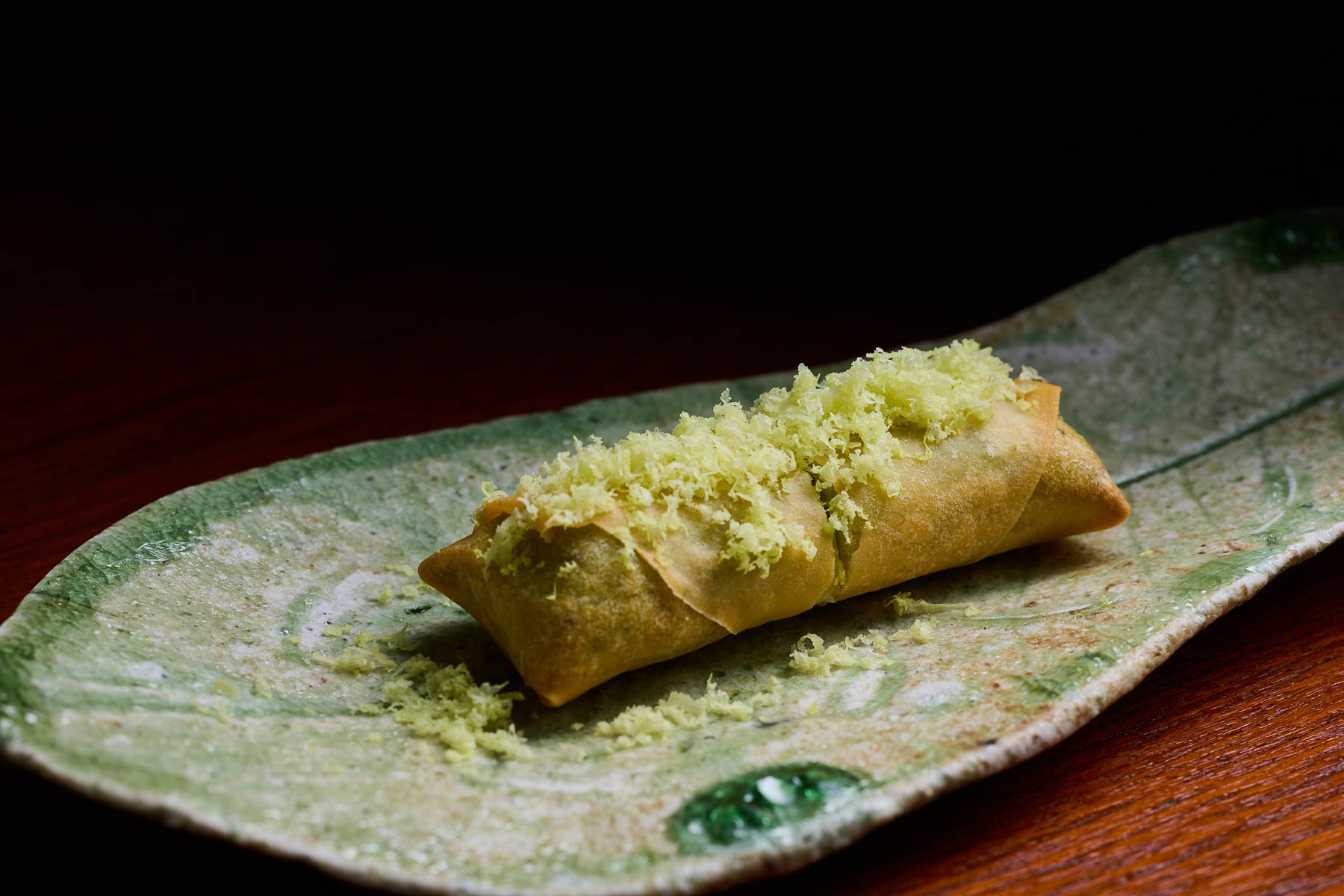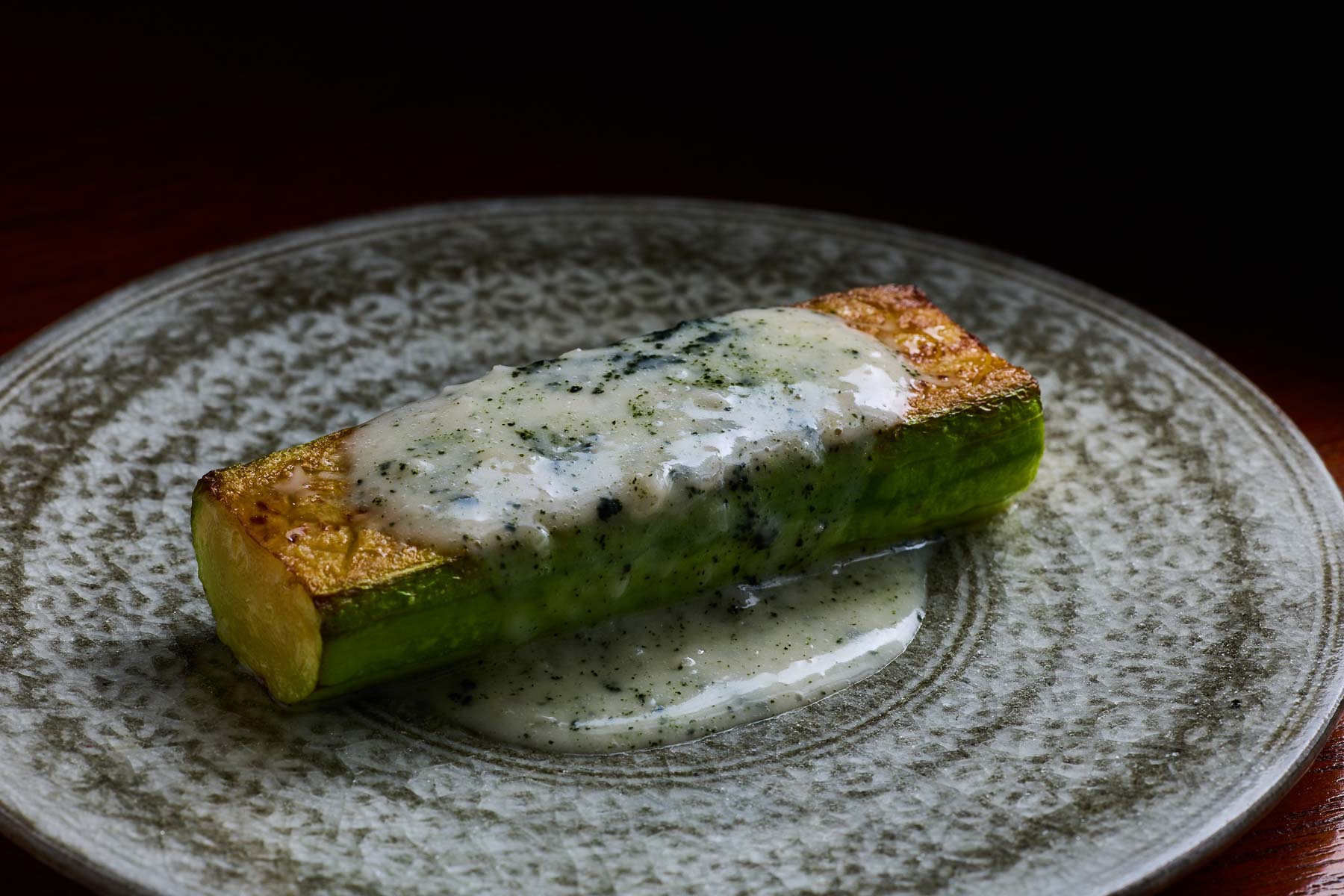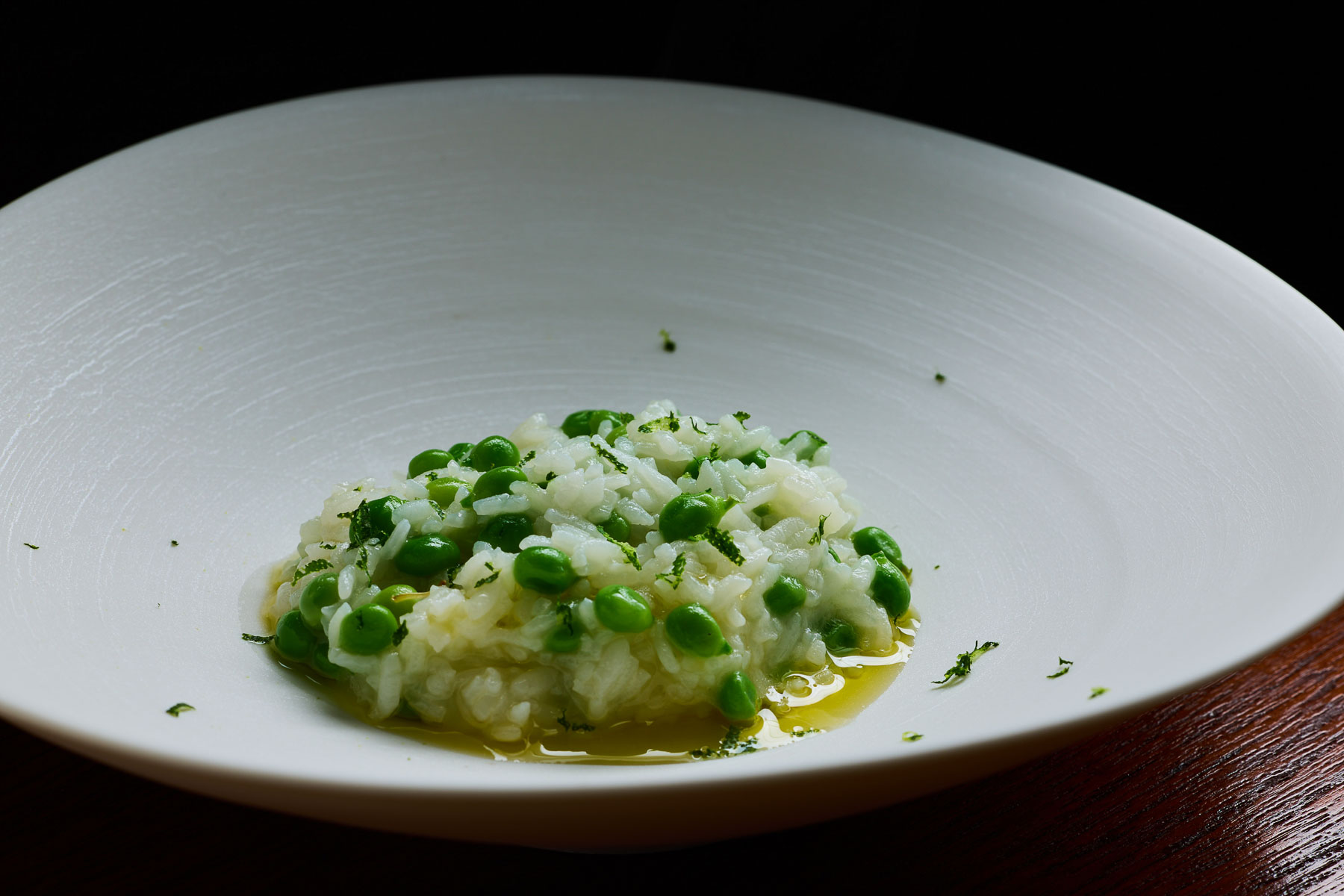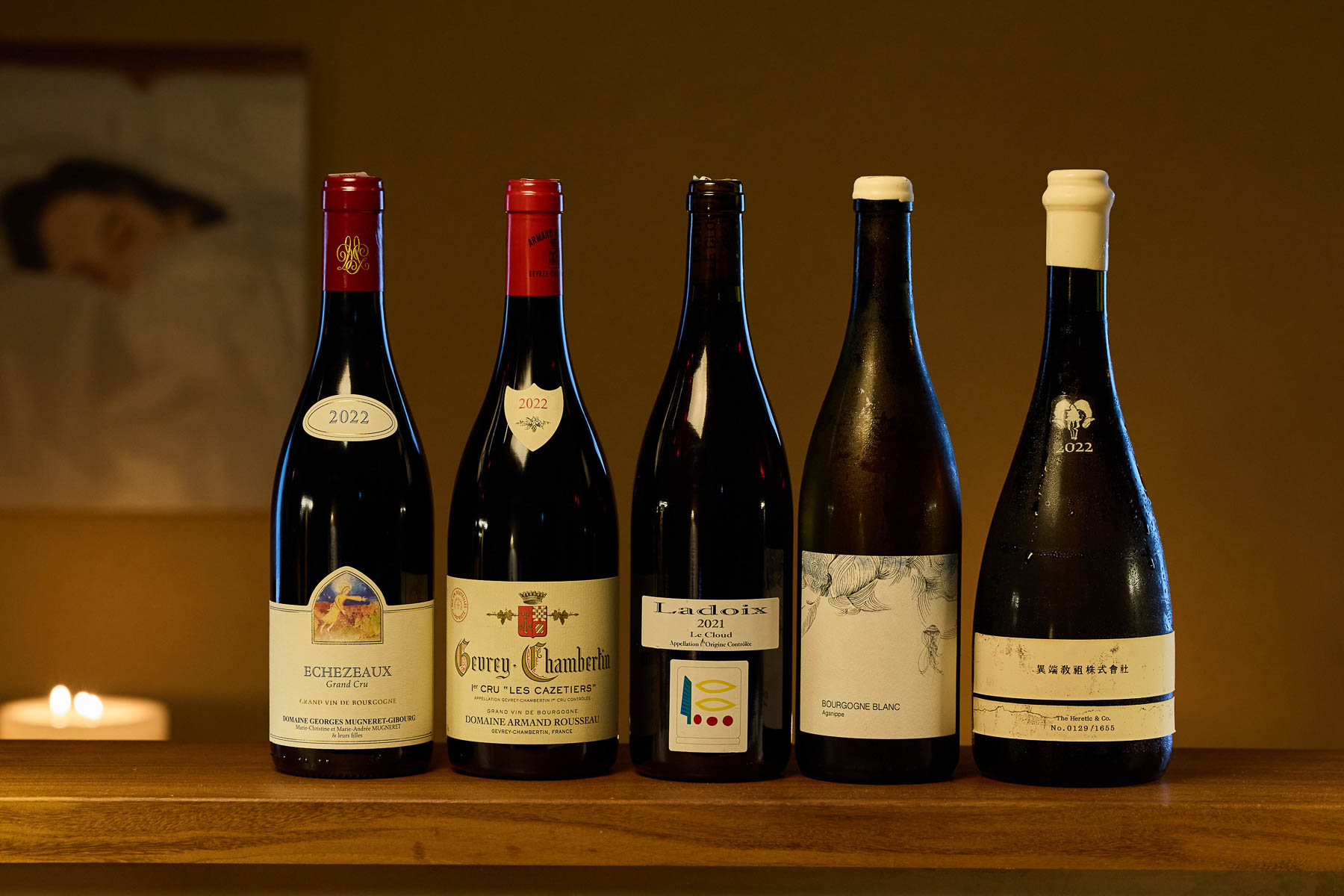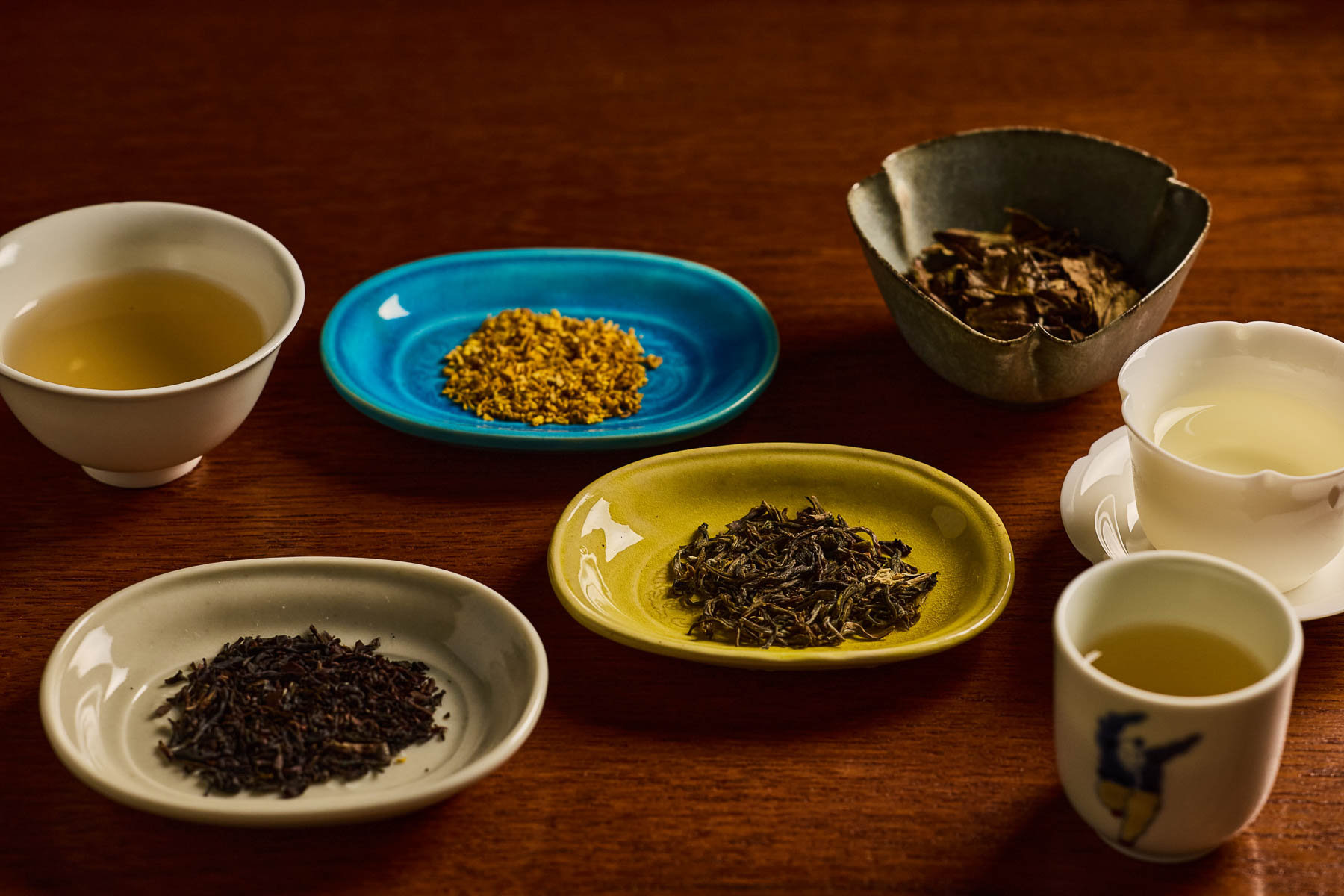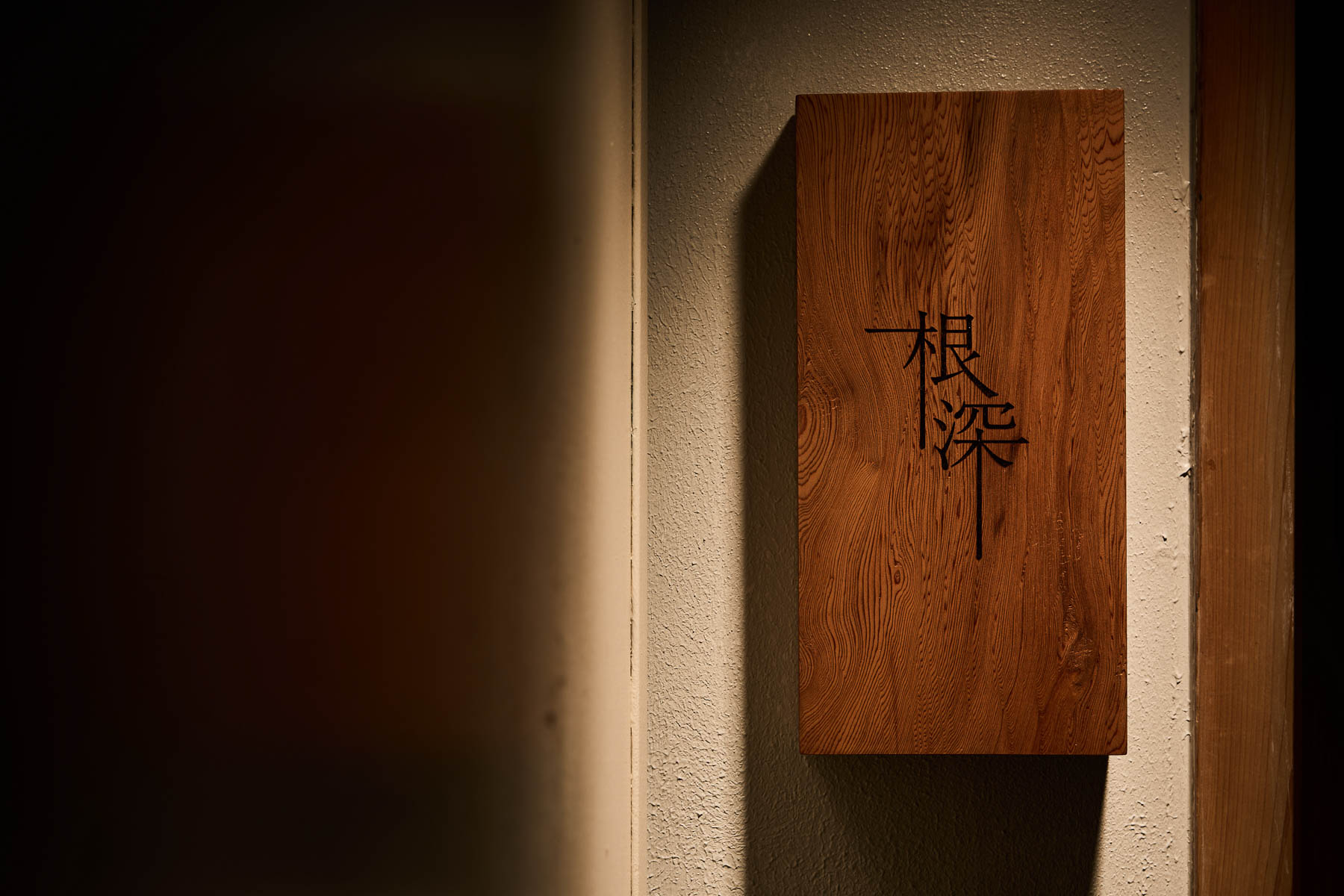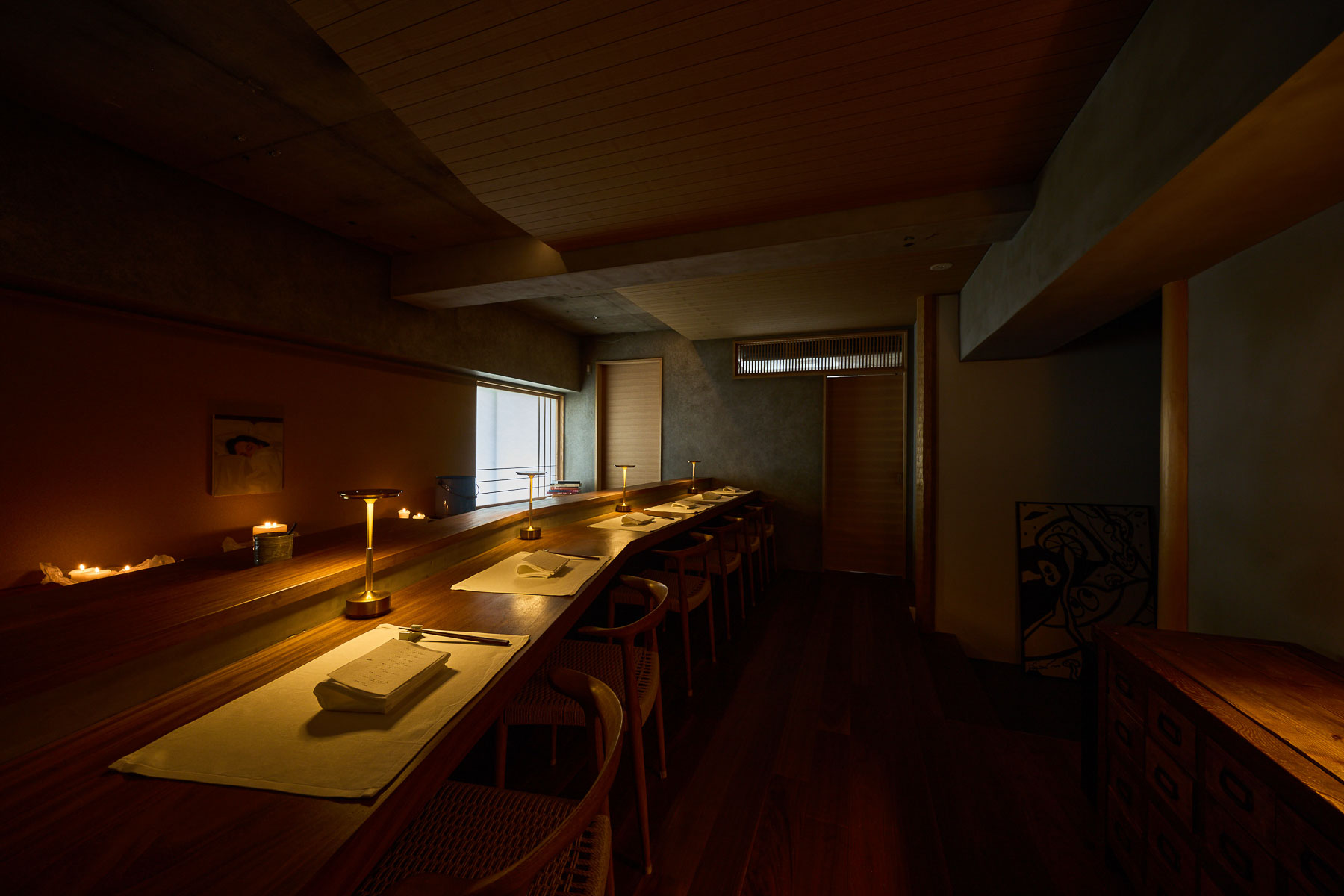
Tokyo
Nebuka
根深
In a city celebrated for marbled wagyu and buttery tuna, Chef Chiharu Kobayashi places vegetables at the heart of his omakase. At Nebuka, his French-style tasting menu is built around produce sourced directly from small-scale farms across Japan. Each meal begins with an introduction to the day’s ingredients—their variety, region and the story of the producers. From simmered white asparagus to oven-roasted zucchini in seaweed beurre blanc, his refined technique allows the ingredients to shape the flavor of each dish.
Tucked away in a quiet corner of Roppongi, Nebuka shares its address with its sister restaurants: Kanjo, which specializes in grilled duck and soba; and Owari no Kisetsu, a discreet wine bar. The restaurant’s name, which refers to a type of scallion with a deep root, speaks to the idea of cooking with intention. Much like a grapevine that thrives the deeper it grows, Kobayashi aims to create cuisine that resonates beneath the surface.
Inside the restaurant, Kyoto architect Tetsu Kijima has created an intimate space using natural materials like wood and clay. The eclectic décor—paintings by Iori Nagashima, candles, art books and galvanized buckets that serve more as sculpture than storage—reflects Kobayashi’s desire to create a place that feels like home.
The restaurant offers eight counter seats in the main dining area and a separate private room that accommodates up to six guests. An antique medicine cabinet behind the counter hides small surprises—chewing gum and gummy candies tucked into its drawers for guests to take on their way out. The restaurant also collaborates with artists and artisans to design exquisite custom-made tableware.
CUISINE
Vegetables at the heart of his omakase
At Nebuka, the meal always begins with an engaging presentation. Kobayashi places all the day’s vegetables in front of the guests, a ritual that turns anticipation into part of the experience. Each item is introduced by name, along with its prefecture of origin and the producer who cultivated it. “It’s a taste that can only be produced by that grower,” he explains.
The omakase course follows a seasonal rhythm, typically composed of six vegetable dishes, a meat course, a rice dish and a dessert. On a recent June visit, the menu included a diverse mix of ingredients: white and green asparagus, broad beans, zucchini, new garlic, broccoli, shark fin, Yamagata beef, jasmine rice, peas, loquat and a delicate white bean paste.
The oven-roasted zucchini has become a house signature. Sourced from Akihito Yamazaki, a farmer in Tochigi Prefecture, the vegetable is roasted at high heat until its flavor concentrates, then served with a beurre blanc sauce infused with toasted seaweed. Its balance of crisp texture and deep savor impressed even the most gourmet guests. The pairing with a glass of 2022 Chardonnay from Château Perret Jouanes amplifies the sweetness of the zucchini.
The white asparagus, grown by Yosuke Akagi in Hokkaido, is simmered in a broth extracted from its own skin; the stalk retains an almost raw texture while offering a doubled intensity of flavor. A hint of kinome miso and a light drizzle of olive oil add depth to the flavor.
Broccoli is gently simmered in a shellfish-based broth until tender, served alongside charcoal-grilled cockles. Enoki mushrooms from Nagano Prefecture are lightly fried in oil to draw out their umami, then served in a pheasant consommé and finished with a dash of Nepalese pepper. Broad beans are blended with shiitake into smooth duxelles, wrapped in spring roll sheets, and fried. A shower of shaved broad beans adds brightness to the final plating.
To close the savory meal, Kobayashi serves jasmine rice in a delicate rice porridge with peas. Instead of butter or cheese, he uses kombu’s umami for depth. A touch of shaved lime peel adds a light accent.
INGREDIENTS
The foundation of Nebuka’s cuisine lies in relationships with its producers. Kobayashi works closely with a network of around ten vegetable producers, most of whom he visits regularly. Among them is Akihito Yamazaki in Tochigi Prefecture, known for his broccoli. These are not anonymous suppliers but true collaborators, he says.
Game meat such as duck, venison and wild boar comes from experienced hunters who specialize in proper bleeding techniques to preserve flavor and quality. Rice is sourced from Yamagata Prefecture, while sun-dried salt comes from Tanoya Shiran, a producer in Kochi dedicated to traditional methods. For olive oil, Kobayashi likes the lightest of the Lorenzo line, a premium variety from Sicilian brand Barbera, because it doesn’t overpower the delicate vegetable dishes.

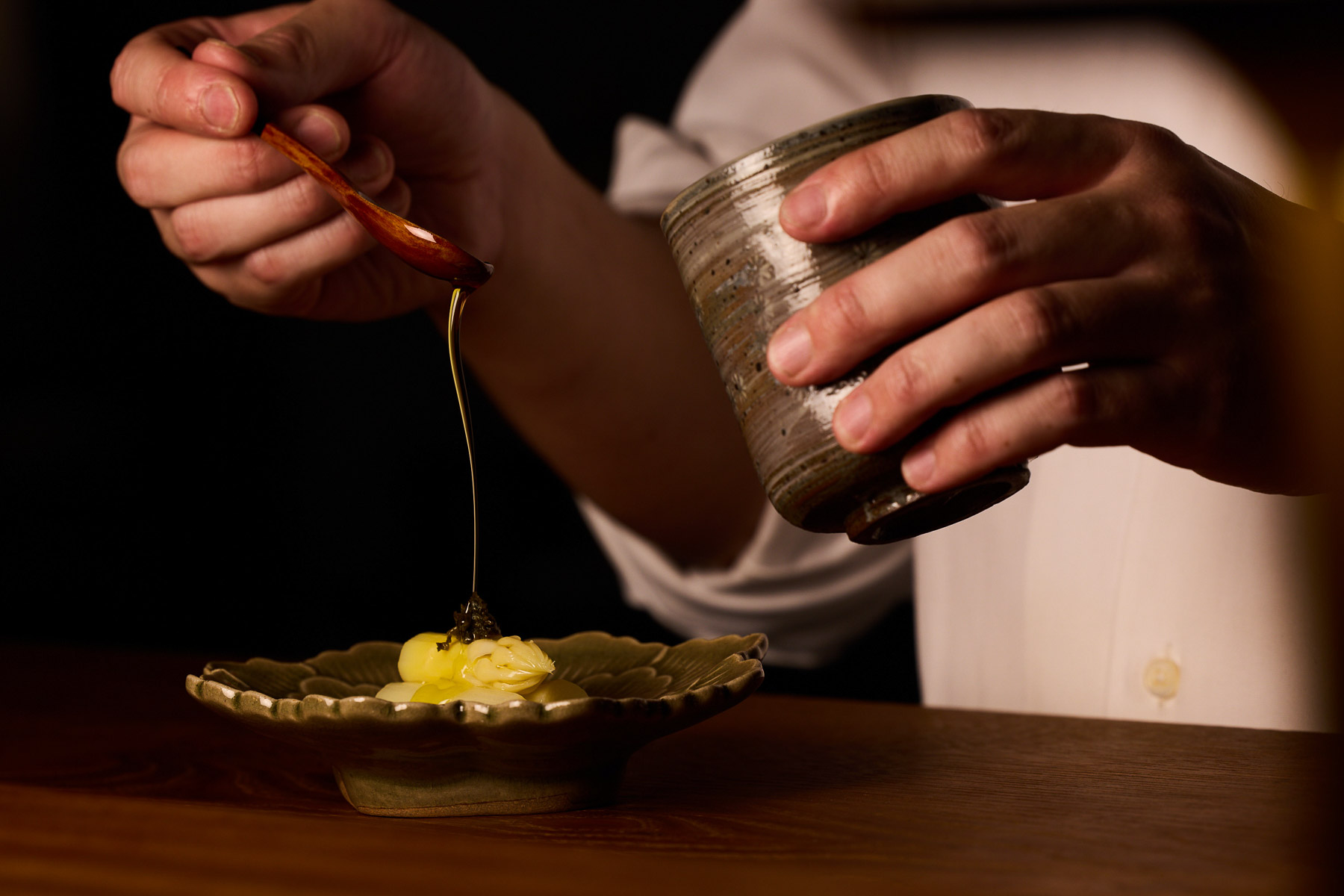
CHEF
Chiharu Kobayashi
DRINKS
Nebuka’s drink menu is selective and thoughtful, complementing the delicate flavors of its cuisine. Wine pairings focus primarily on French selections, with an emphasis on Champagne and Burgundy. Natural wines feature prominently, chosen for their ability to enhance the expression of the ingredients. Guests can opt for either a nine- or four-glass pairing.
Sake is also offered, with selections like Aramasa from Akita Prefecture, known for its soft, rounded character. For those looking for a non-alcoholic experience, Kobayashi offers a thoughtful range of teas including a variety of Chinese and Japanese brews. Each is served at a temperature calibrated to match the vegetable courses.
Course
- The price includes our booking fee of ¥8,000
- The price includes our booking fee of ¥8,000


